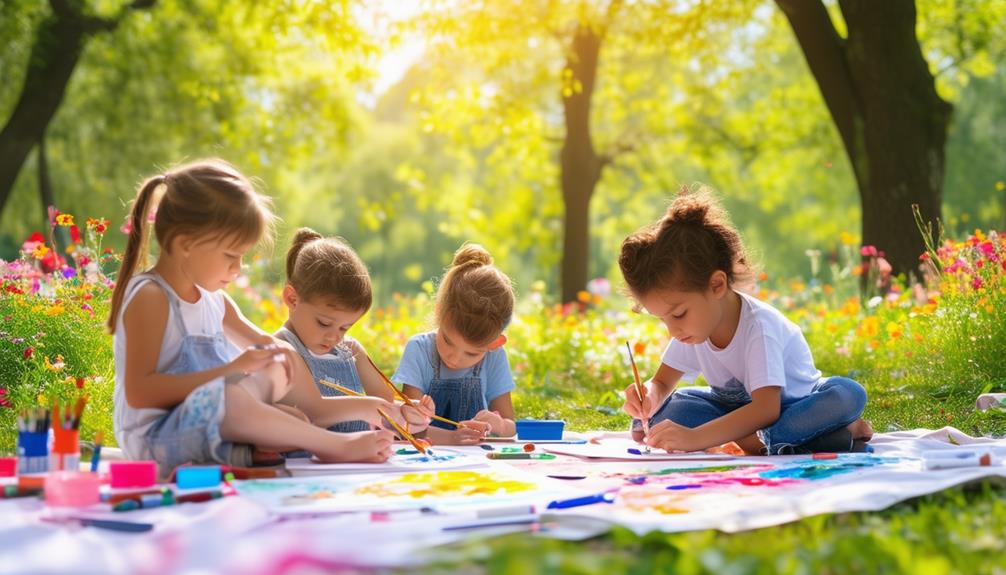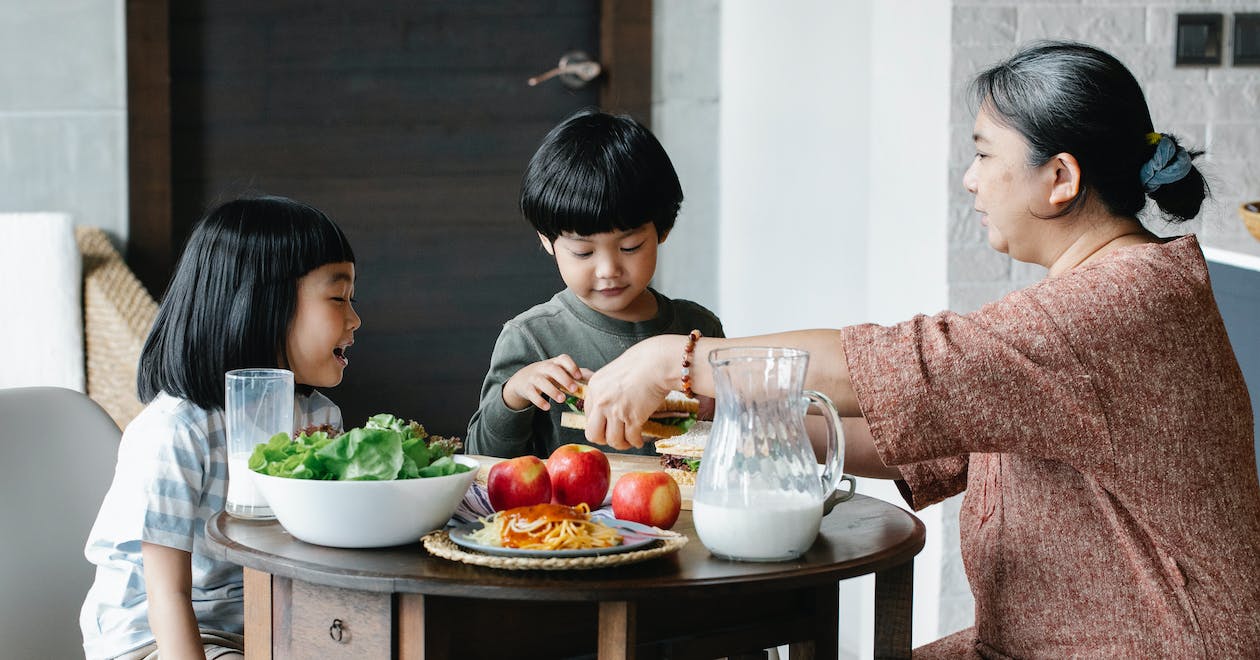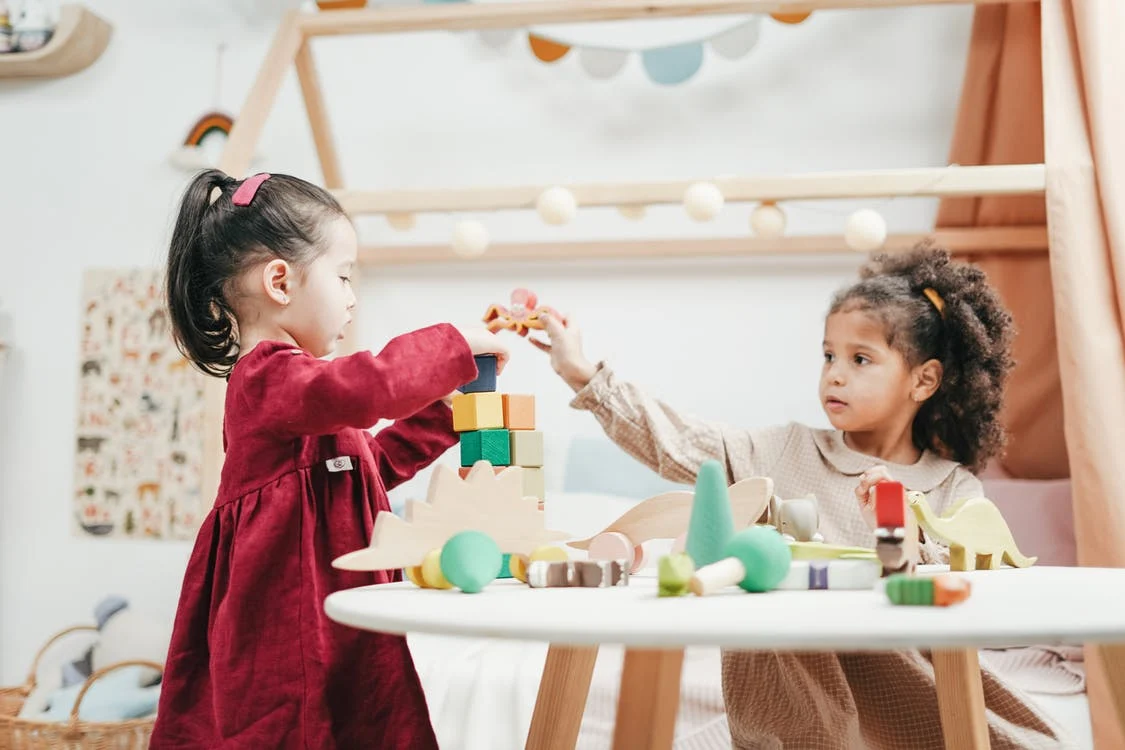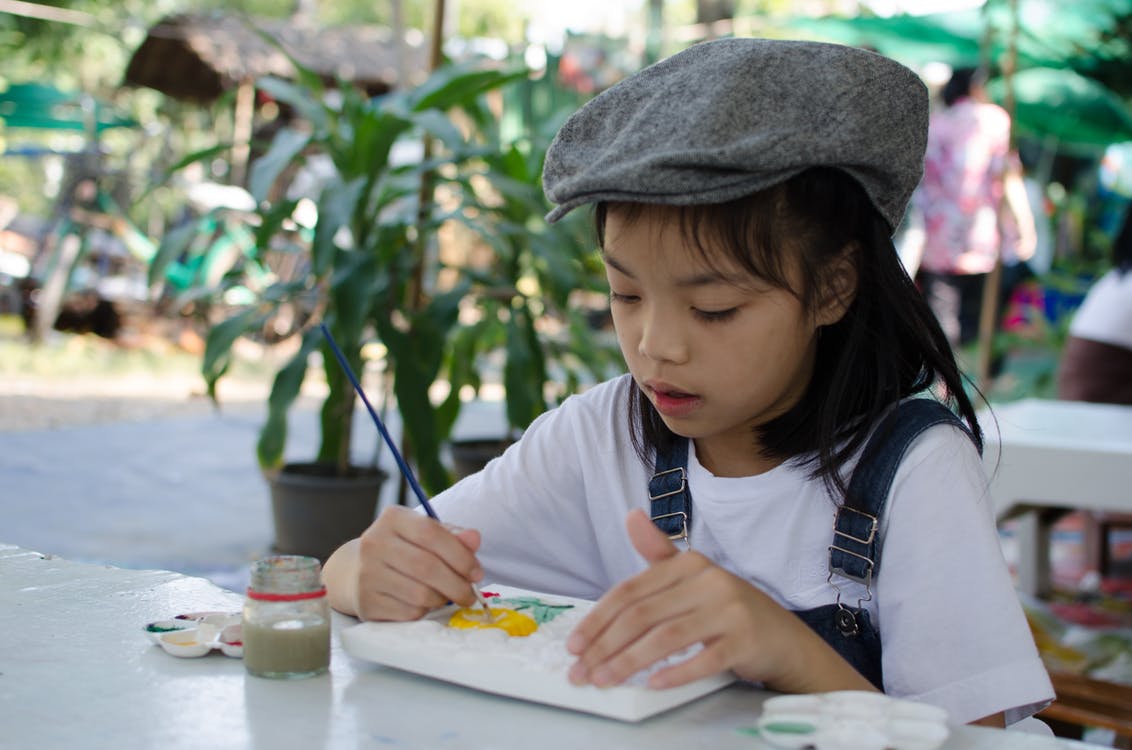Painting for Relaxation and Mindfulness in Children

Have you ever considered how painting could enhance your child's emotional and mental well-being? Engaging in this creative activity allows children to immerse themselves in the present moment, focusing on the simple joy of colors and textures. It's more than just fun; it's a mindful practice that helps regulate emotions and improve concentration. You might be surprised at the profound impact this can have on their overall calmness and inner peace. So, how can you introduce this beneficial practice into your child's routine?
Basics of Mindfulness Art
Mindfulness art blends creative activities with mindfulness practices, aiding children in developing self-awareness and emotional regulation. The focus is not solely on producing a beautiful piece of art but on the act of creating itself. When children engage in mindful art activities, they immerse themselves in the present moment, practicing mindfulness in a fun and engaging manner.
Various mediums—such as painting, drawing, sculpture, and collage—can be employed to integrate mindfulness art into a child's routine. These activities provide distinct ways for children to express themselves while maintaining mindfulness. Emphasizing the process over the final product reduces pressure and allows children to explore their emotions and creativity freely.
Encourage your child to pay attention to the colors, textures, and movements involved in their creative process. Ask them how they feel when mixing colors or shaping clay. This practice not only raises awareness of their emotions but also aids in emotional regulation. By incorporating mindful art activities into their daily lives, children can develop greater focus, concentration, and a sense of calm.
Benefits of Mindfulness Art
Engaging in mindfulness art significantly enhances your child's ability to regulate emotions and maintain focus. This creative practice also helps reduce stress, promoting relaxation and clearer thinking. By developing these skills, mindfulness art supports your child's overall well-being and development.
Enhances Emotional Regulation
Engaging in creative activities like painting helps children express and process their emotions, leading to better emotional regulation skills. When children participate in a mindfulness art activity, they have a safe space to explore and articulate their feelings. This process not only fosters emotional well-being but also alleviates stress and anxiety. As they paint, children learn to focus on the present moment, an essential aspect of mindfulness.
Practicing mindfulness through art enhances children's self-awareness. They begin to understand their emotions more clearly, enabling more effective management of those feelings. This heightened self-awareness is crucial for emotional regulation, as it helps children recognize and process their emotions before reacting impulsively. Through regular painting sessions, children can build resilience, learning to cope with and navigate their emotions in a healthy manner.
Mindfulness art activities are highly beneficial for emotional regulation. As children paint, they can reflect on their feelings, gaining insight into their emotional world. This reflection is a powerful tool for emotional growth and stability. Encouraging children to engage in painting not only nurtures their creativity but also significantly improves their ability to regulate their emotions effectively.
Boosts Focus and Concentration
As children develop emotional regulation skills through painting, they also experience significant improvements in focus and concentration. Engaging in mindful art activities allows them to immerse themselves fully in the creative process, naturally enhancing their attention span. By concentrating on the present moment during these activities, children learn to block out distractions and stay focused on the task at hand.
Research indicates that mindfulness art activities can improve cognitive abilities in children. Encouraging present-moment awareness helps children develop a stronger capacity for concentration. Painting requires attention to detail, colors, and shapes, which sharpens their focus. This immersive experience is invaluable, especially in a world filled with constant distractions.
Additionally, the calming effects of mindfulness art help children maintain attention during painting sessions. When relaxed, children are more likely to stay engaged and attentive, making the benefits of mindful art activities even more apparent. By introducing painting for relaxation, you foster creativity while enhancing focus and concentration.
Promotes Stress Reduction
Mindfulness art offers a powerful tool for stress reduction by enabling children to express themselves creatively and focus on the present moment. Engaging in art therapy allows kids to channel their emotions into their creations, thereby reducing stress. Studies have shown that such activities can lower cortisol levels, the stress hormone, in children, making them feel more relaxed and at ease.
Painting and other forms of mindfulness art provide a calming outlet for kids to unwind and release tension. This practice not only reduces anxiety but also supports their overall well-being. By incorporating mindfulness art into their daily routines, children can develop healthy coping mechanisms to manage stress more effectively.
Benefits of Mindfulness Art for Children
- Relieves anxiety and tension
- Enhances emotional expression
- Cultivates inner peace
- Improves overall well-being
Art therapy offers a constructive way for kids to process their thoughts and emotions. As they immerse themselves in the creative process, they become more present, reducing worries about the past or future. This focused state promotes relaxation and a sense of calm, significantly benefiting their mental health.
Implementing Art Activities
Creating a soothing atmosphere with gentle lighting and relaxing music can greatly enhance the relaxation aspect of children's painting activities. This sets the stage for a mindful experience, helping kids focus and immerse themselves in the activity. Providing a variety of painting tools and materials encourages exploration and creativity, allowing children to discover what resonates most with them.
Incorporate mindfulness techniques like deep breathing and visualization to help them relax and concentrate. Guide the kids through a few deep breaths before starting, encouraging them to visualize what they want to paint. This not only calms their minds but also enhances their focus on the task.
Give children ample time to express themselves freely through painting, promoting self-awareness and emotional regulation as they convey their feelings through art. Tailor art projects to different maturity levels, ensuring each activity is engaging and developmentally appropriate. Younger children may enjoy simpler tasks like finger painting, while older kids might prefer more detailed projects.
Art Techniques for Mindfulness
Engaging children in art techniques that incorporate mindfulness can significantly enhance their ability to relax and concentrate. Integrating mindfulness art activities into their daily routine can improve their mental health and emotional well-being.
Begin with simple breathing exercises. Have the children count their breaths while painting, fostering a sense of calm and focus.
Encourage the use of various textures, materials, and colors in their art projects to promote sensory exploration, a key aspect of mindfulness. Guide them to feel different textures, from smooth paint to rough paper, and observe how each one influences their mood and attention. Visualization is another effective tool. Prompt them to imagine peaceful scenes, such as a serene beach or a quiet forest, as they create their art.
Adding auditory elements, like calming music or nature sounds, can further enrich their mindfulness practice. This can make the activities more immersive and soothing, helping them to fully engage in the moment.
- Counting breaths while painting: Enhances focus and tranquility.
- Exploring textures and materials: Promotes sensory mindfulness.
- Visualizing peaceful scenes: Encourages relaxation and creativity.
- Listening to calming music: Deepens the mindfulness experience.
Mindfulness Art in Education

Integrating mindfulness art into educational settings supports individual well-being and enhances emotional regulation and empathy among students. When young children engage in mindfulness art, they express themselves creatively while developing self-awareness. This practice helps them manage emotions effectively and fosters empathy toward peers.
Incorporating mindfulness art into various subjects enriches learning experiences. For example, combining art with science or literature allows students to explore concepts hands-on and reflectively, making learning more engaging and meaningful.
Collaborating with art educators and mindfulness experts optimizes the benefits of mindfulness art in education. These professionals can guide implementing techniques that enhance emotional and cognitive development in young children. Involving parents in mindfulness art activities creates a supportive and holistic approach to student well-being, as parents can reinforce these practices at home.
Mindfulness art in education nurtures vital life skills such as creativity, self-awareness, and focus. Integrating these practices into the curriculum not only maximizes academic performance but also prepares students for future challenges with a well-rounded, mindful approach to life.
Classroom Art Projects
When students participate in classroom art projects, they engage their creativity and self-expression while fostering mindfulness. These projects emphasize the process of creation rather than just the final product, allowing students to explore their thoughts, feelings, and ideas in a safe and supportive environment. By concentrating on activities like painting or drawing, students can improve their focus, concentration, and emotional regulation.
Incorporating creativity and mindfulness into classroom art projects offers numerous benefits:
- Stress Relief: Art activities help students unwind and reduce stress, enhancing the classroom atmosphere.
- Emotional Expression: Students can communicate their emotions and experiences through their artwork, which can be therapeutic.
- Present Moment Awareness: Art projects encourage mindfulness and staying present, promoting a sense of inner calm.
- Life Skills Development: These activities help children develop critical life skills such as problem-solving and critical thinking.
Outdoor Mindfulness Art

Engaging children in outdoor mindfulness art stimulates their creativity and enhances their mental well-being. Nature serves as both a backdrop and inspiration, helping kids connect with their surroundings, reduce stress, and cultivate present-moment awareness. Encourage the use of natural materials and provide creative freedom to maximize the calming benefits of nature art.
Benefits of Nature Art
Engaging children in outdoor mindfulness art is an effective way to enhance their creativity and mental well-being. By participating in nature art projects, kids can immerse themselves in their surroundings, which sparks their creativity and encourages mindfulness and focus. Creating art outdoors allows children to express their emotions and explore their imagination, all while staying present in the moment.
Nature art projects also provide a healthy outlet for kids to relieve stress and improve their mood. The calming environment of nature helps regulate emotions and promotes tranquility, making it easier for children to concentrate and remain mindful.
Consider these emotional benefits:
- Stress Relief: Nature's soothing presence helps reduce anxiety and tension.
- Elevated Mood: Creating art in an outdoor setting enhances happiness and emotional well-being.
- Emotional Expression: Children find a safe space to express their feelings through art.
- Mindfulness: Focusing on natural elements encourages kids to stay present and attentive.
Engaging Kids Creatively
Engage children creatively and boost their mental well-being by introducing outdoor mindfulness art activities. These activities provide a healthy outlet for emotional expression while keeping kids grounded in the present moment. By taking art projects outdoors, children can explore and incorporate natural materials like leaves, stones, and flowers into their artwork.
Creating art in natural settings significantly improves mental health. The fresh air and surroundings reduce stress and enhance overall mood. Simple activities such as painting on rocks, making leaf collages, or drawing nature scenes have a profound impact.
Focusing on the textures, colors, and shapes in nature heightens children's awareness of their environment. This increased present-moment awareness enriches creativity and promotes mindfulness. Outdoor art projects help children connect with nature, reduce anxiety, and improve mental well-being, making them a valuable component of any mindfulness practice.




